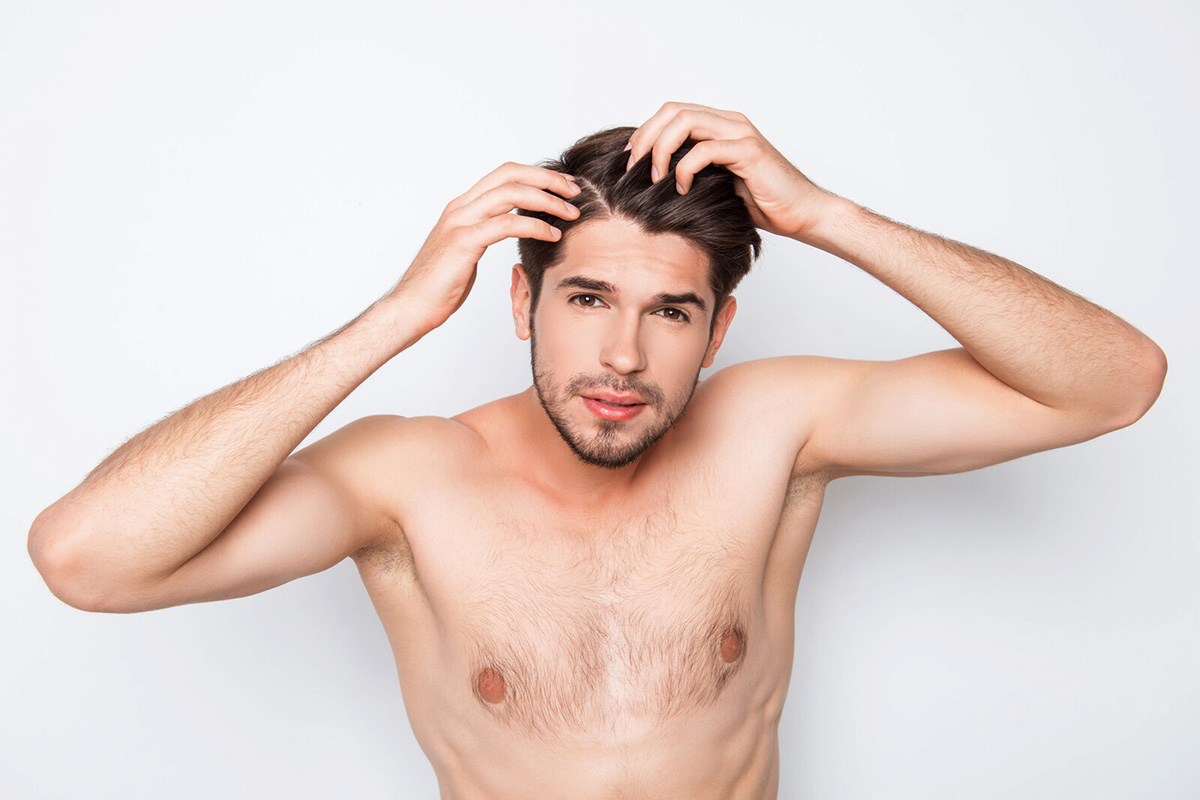Table of contents
25% of adult men are affected by baldness and they are the most represented among the 10 million French people affected by this condition. The latest innovation in the field of hair loss treatment, PRP (Platelet Rich Plasma), is a technique widely used in other fields of medicine and is now successfully applied to the treatment of baldness.
A solution that is increasingly popular with male aesthetics experts. By the way, if you have arrived at this article, you should know that you are not the only one who is interested in PRP, I have already tested this process and I will try to explain how this alternative to hair transplant works.

© Can Stock Photo / Deagreez
Baldness: a treatment for every cause
More than 100 hairs lost per day: this is the first sign of alopecia. In dermatology, alopecia is the term used to describe abnormal hair loss that causes balding of the head.
There are several forms of alopecia and not all of them can be treated with PRP. For example, congenital alopecia, which is mostly inborn, can only be treated by hair transplantation. Rest assured, this form of baldness is extremely rare.
Peladic baldness, which is a sudden loss of hair often associated with a stressful episode, can be effectively treated by local and/or oral treatment, or by puvatherapy.
Other forms of infectious alopecia also exist, such as ringworm, and cannot be treated with PRP, but with antifungal treatments.
The good news is that the most common forms of baldness that you may experience, such as nearly one in three men, respond very well to treatment with Platelet Rich Plasma.
Indications for PRP treatment
The indications for PRP are early hair loss or difficult and slow regrowth, for example after an episode of hair loss. This is the case for androgenetic alopecia, which is the most common condition, affecting approximately 1/3 of men under the age of 45.
Stimulation of hair regrowth induced by the application of PRP is also indicated for diffuse alopecia, commonly called effluvium, which is a non-hereditary and reversible hair loss resulting from a disorder suffered by the body, which can be severe fatigue, a treatment (chemotherapy, radiotherapy, etc.) or even a dietary deficiency.
In addition, the new techniques for treating hair loss with PRP include a new innovative process. Indeed, associating mesotherapy to a PRP treatment is a solution more adapted to men’s hair loss because it brings a cocktail of vitamins directly injected in the scalp in order to stimulate the hair follicles, and thus the regrowth, but also to slow down the hair loss because of its stimulating effect on the blood circulation in this area.
The technique of PRP: nourish hair growth with the active ingredients of blood platelets
The technique is proven since it has been applied in various fields of medicine for many years (tendon healing, treatment of osteitis, preparation and osteogingival repair before dental implants…).
It is based on the intrinsic characteristics of blood platelets that allow the activation of microcirculation and therefore the stimulation of hair stem cells.
In concrete terms, these cells have the capacity to regenerate the hair and stimulate its regrowth. They are aimed primarily at the hair follicles that are the most sensitive to these cells and will be stimulated. This treatment can be used alone or in combination with other anti-hair loss medical treatments or hair transplants.
PRP hair treatment: the steps of the procedure
Basically, it involves isolating platelets from a blood sample and reinjecting them into an area where repair is desired.
It starts with a simple blood sample, then the professional uses a centrifuge to separate the PRP from the other blood components and then extracts the serum.
The final step is the injection: after local anesthesia of the scalp, the highly concentrated PRP is directly injected with a micro-needle into the areas to be “repaired.
Multiple injections are performed in a single session. The procedure is not painful, as the injections are performed under local anesthesia.
Each session lasts about 1 hour and the protocols are adapted according to the patient. Generally speaking, you should count on 2 sessions at 3 months, then 1 to 2 sessions every year.
As this is a non-surgical procedure, there is no recovery time to be expected
In addition, the fact that PRP treatment is based on the active ingredients contained in the patient’s blood neutralizes any risk of rejection. An ideal solution that can be carried out alone or in combination with a hair transplant, depending on the stage of your baldness and its causes.
